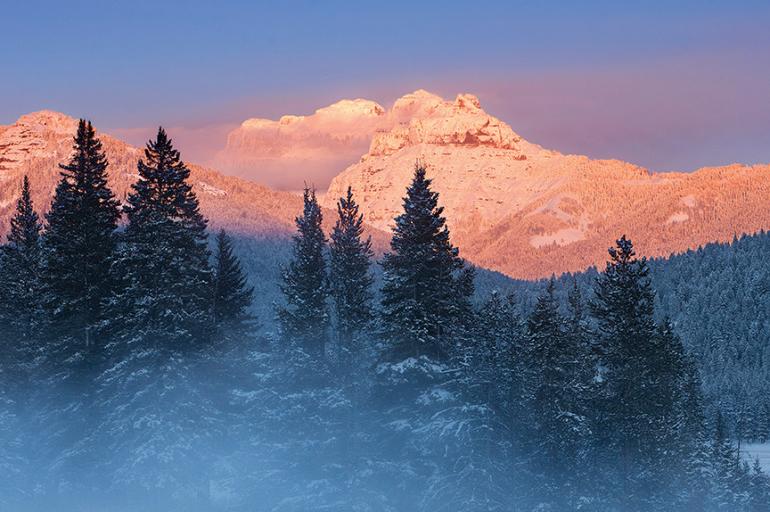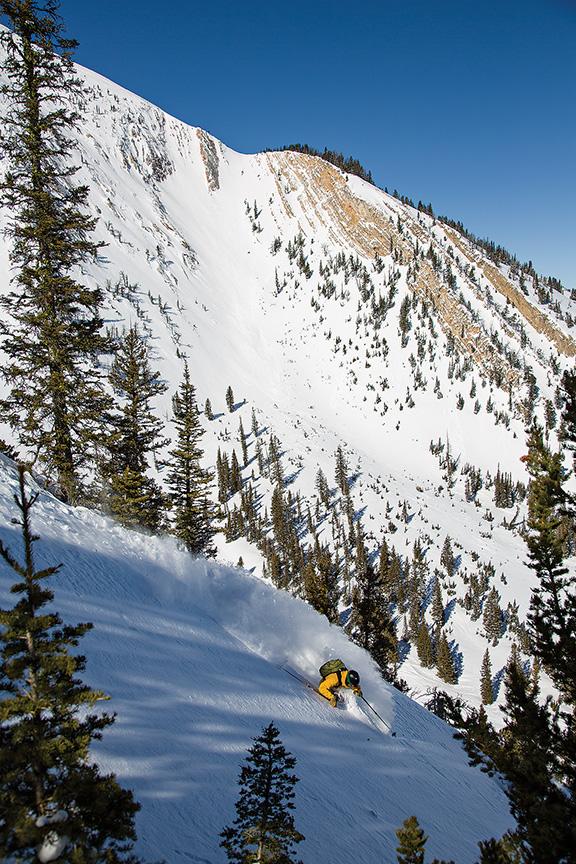Cold Flashes
Shooting the winter landscape.
Winter’s here and some photographers are retreating indoors. And that’s not surprising, as winter is the hardest season to shoot outdoors. However, for the brave few, winter can offer extraordinary images. Here are some basic rules and tips to help keep your gear in shape and your eyes keen.
Bring a spare battery (or two). The modern digital camera is remarkably resilient to most conditions, but the low temperatures of winter can affect your gear in certain ways that you may not think of during the warmer months. Lithium ion batteries are expensive but vulnerable to the cold, so expect to have much shorter battery life in winter than usual. Combat this by keeping spares in a warm place like a coat pocket.
Let your camera warm up slowly. This is something most of us don’t think about, but once a camera has been exposed to low temperatures, water condensation can form rapidly on the body and optics if it’s warmed up too quickly. Let the camera sit in a cooler area of the house before handling it, or if that’s not possible, wrap your gear in a towel to let it warm more slowly. This is also why you should try to keep a camera in its own bag when not in use and never under a coat or in a pocket. The warmth and humidity of your body can cause rapid condensation on the camera.
Keep yourself warm. Hopefully this goes without saying, but proper winter attire is crucial for anyone outdoors for an extended period— especially photographers determined to get the right shot. Always wear several layers of warm clothing, a waterproof outer layer, a hat, and most importantly, a good pair of gloves. Operating the camera can be a challenge, but investing in a warm, flexible pair of gloves will pay for itself ten times over during winter shooting.
Well-prepped gear is nothing without a photographer to shoot it, and many lose inspiration after the snow falls. With that in mind, here are some tips and ideas for cold-weather shooting.
Head for the mountains. Montana has a wealth of beautiful mountain ranges, and isolating them during the winter can make for great photographs. All you need to do is find a particular mountain or range and isolate it using a telephoto lens. Try to shoot during the golden hours, as the snow on the high peaks will absorb the color of the light and make for a fantastic landscape.
Everyone loves a frozen waterfall. Frozen waterfalls are one of the unique aspects of a winter landscape, so take advantage of them. Even if a waterfall isn’t totally frozen, the cold weather can give them an icy quality that isn’t there in warmer months. It also provides a different perspective of the place, especially if it’s a well-known waterfall. Also, take advantage of riverbanks. As the temperature drops below freezing, they can create frigid fog that forms ice crystals on the vegetation along the shore. If you’re going to be anywhere near frozen water, be sure to take extra precautions—wear water-resistant boots (with micro-spikes if possible) and bring trekking poles for extra stability.
Sun and snow is a winning combination. Winter can be a dreary time, no doubt, but when the sun is shining after a snowfall you should not waste the opportunity. It’s a photo-enhancer for every photographer. Landscape shooter? Sunrise and sunset will be absolutely gorgeous. Wildlife shooter? The bright light makes for better shutter speeds and prettier backgrounds and foregrounds. Portrait shooter? The whole world is one giant reflector. The sunlight can play on or subjects face like no other time of the year.
Winter shooting is always a challenge, but hopefully these tips will help inspire some photo-hibernators to get out there when the temperature drops. With the proper knowledge and perseverance, any outdoor photographer can succeed in getting great images, even in the dead of winter.
Conor Glesner works at Bozeman Camera on N. 7th Ave.







